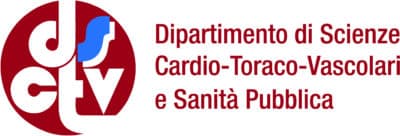

The Second-level short specialisation degree in Geospatial data science for human, animal and environmental health, the only one of its kind in Italy, trains professionals capable of exploiting the growing availability of geolocated data from different sources, such as satellites and proximity sensors.
The program aims to provide learners with the skills necessary to correctly use geoinformation and tools for spatio-temporal analysis in order to improve the understanding of phenomena related to health and well-being.
The course aims to analyze and understand the dynamics of phenomena related to human, veterinary and vegetation health, using advanced modeling techniques applied to geospatial data.
The Second-level short specialisation degree is promoted by the Department of Cardiothoracic-Vascular Sciences and Public Health and by the Department of Territory and Agro-Forestry Systems of the University of Padua.
The Second-level short specialisation degree in Geospatial data science for human, animal and environmental health is online, and can be followed also by students who work full time, as it is provided on-demand through the multimedia Moodle platform of the University of Padua.
The Second-level short specialisation degree has been designed for students and professionals who wish to combine other activities and jobs with the need to further qualify or specialize.
There will be a frequent and user-friendly interaction between students and professors, through Moodle’s Forum.
The final project work shall be discussed between June and July, also on cases of specific interest suggested by students, and agreed with the tutor. It will also be discussed online, on the Zoom platform.
The objective of the Second-level short specialisation degree in Geospatial data science for human, animal and environmental health is to provide training on how to correctly use geo-information and the tools of its spatial-time analysis.
Its purpose is analysing and understanding the dynamics of phenomena linked to human, animal and plant health, through advanced modelling techniques applied to geospatial data.
The course will form researchers and professionals capable of using geospatial information correctly, by integrating it with other sources and expanding the descriptive and predictive capacity and reliability of the analysis.
Through lessons, hands-on exercises and expert seminars, the Second-level short specialisation degree will help attendees enhance and improve the operations required to solve human, animal and plant health issues.
It will provide knowledge on statistical technique, automatic learning and data-mining innovations, with integration of geospatial information.
The Second-level short specialisation degree trains professional figures, such as consultants and operators of public administrations, companies and enterprises, NGO and non-profit organizations, as well as players involved in training and freelancers that provide advanced spatial-data analytics.
The Second-level short specialisation degree in Geospatial data science for human, animal and environmental health includes the following modules:
Module 1 – Geospatial data management
Where to find information, how to extract the geospatial component, in what format transferring data to make them manageable, with what tools (data mining). Use of territorial IT systems (QGIS/GRASS/SAGA), definition of workflow models and creation of QGIS interfaces with built-in R environment.
Module 2 – Spatial data remote sensing and integration
How to structure and integrate the wealth of geodata collected from IoT sensors, drones and satellites in a rigorous way. Use of clusters from Google Earth Engine to extract data to be analysed in the R environment.
Module 3 – Geostatistics
Geostatistical methods, both in the spatial data exploratory analysis and in the inferential and model-making aspects. Spatially-correlated data models, including data prediction and interpolation techniques, de-clustering techniques and geostatistical models for preferential sampling.
Module 4 – Identification of aggregates (clusters) or spatial or spatial-time patterns
From spatial or spatial-time event distribution description methods, to model development for homogeneous and heterogeneous point processes, general clustering tests and cluster-detection tests.
Module 5 – High risk unit and area profiling
Profiling with Bayesian models and empirical Bayesian models, and creation of rankings or multivariate sorting. As example, case studies in environmental epidemiology will be considered, and the drafting of disease risk rankings by municipalities, census and their aggregates.
Module 6 – Point-source analysis
The main spatial evolution methods for disease risk in case of one or more pollution sources. This area also covers the methods based only on point-source distance, such as epidemic exposure assessment methods, which consider machine learning techniques to predict the spatial distribution of the relevant exposure.
For more information on the Director and Professors, and for useful insights on the Second-level short specialisation degree in Geospatial data science for human, animal and environmental health, here’s the presentation video:
Second-level short specialisation degree in Geospatial data science for human, animal and environmental health presentation video
The general ranking of merit for the academic year 2025/26 will be published on the Italian page of this Second-level short specialisation degree according to the timing provided in the Call.
Information
FAQ
The selection to the administration of the Master takes place on the basis of qualifications only. The procedures are described in the call for applications for the Master’s course that you can find on the website of the University of Padua.
1. Exemption for students with disabilities
There is no registration fee for applicants with a certified disability and a disability between 66% and 100%, or for those in possession of a certification pursuant to Law No. 104. These students will only have to pay the pre-enrolment fee, insurance and stamp duties.
2. PA 110 e lode facilitation
Public administration employees who enrol in the Master’s course benefit from a discount of 330 euros on the second instalment of the registration fee.
3. Registration for University staff
It is possible for University staff to enrol as additional staff in order to allow continuous and permanent updating. The registration fee for technical and administrative staff who meet the requirements for admission to the Course, once the course is completed, they can obtain the Diploma or the relative certificate, if they do not meet the admission requirements, they can be admitted as an auditor and obtain a certificate of participation.
- Registration fee for auditors
The registration fee for auditors is equal to 50% of the course registration fee. At the end of the Course, the auditor who has fulfilled the minimum attendance requirement may be issued a certificate of participation by the Course Director.
Attendance of the Master is mandatory, to obtain the achievement of the degree and the certificate of attendance at the Master it will be necessary to access 70% of the online lessons.


